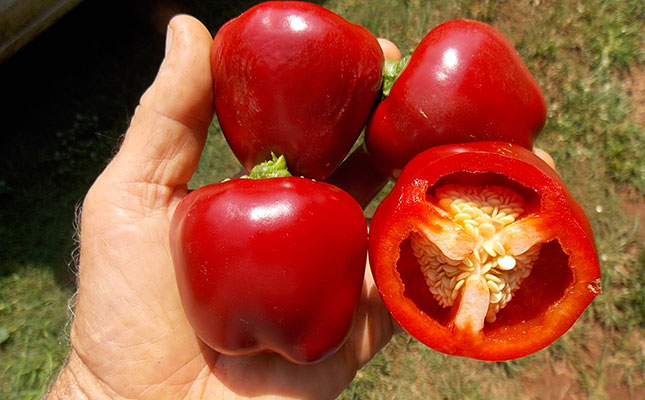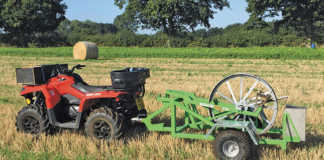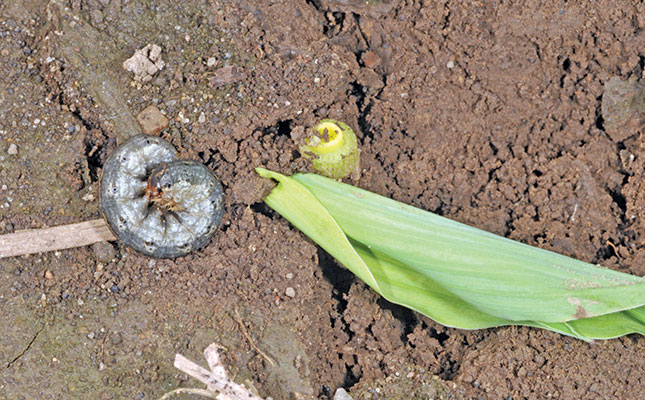
Photo: Bill Kerr
The calcium level should also be adequate; insufficient calcium can lead to blossom end rot.
This usually occurs where there is a good crop and the plants experience water stress. It can be extremely upsetting to expect a good income from a crop, only to suffer major damage within days.
Peppers that develop symptoms of calcium deficiency, such as browning of the stem end, are unmarketable. Ignoring or accepting water stress when the crop is in full production is very risky.
Nitrogen
The nitrogen level can be determined visually by the vigour of the plants, which includes leaf size and colour. Keep them a healthy, dark green.
If the leaves become a medium green, the fruit is likely to have a thinner wall. Customers will pay more for thicker walls.
Apart from this, supplying the plant with enough nitrogen will encourage it to set more fruit, as the amount of fruit the plant can sustain depends on total leaf area and health.
Pests
Keep a good lookout for various pests.
- The western flower thrip: As its name implies, this pest attacks the flowers. It can cause damage in two ways: it is the vector of spotted wilt virus, and it degrades the fruit by creating zipper-like stripes on it. Check the flowers regularly for the presence ofthrips. In addition to spraying, you can buy swirski mites (Typhlodromips swirskii) from a biological pest control company. If the thrips population is low, these mites feed on pollen.
- Caterpillars: These can occasionally be a problem, causing enormous damage that often goes unnoticed until harvest time. They bore into the fruit to feed, so are not as noticeable as when eating leaves. At harvest time, you can count the discarded fruit and calculate the total loss. Inspect the fruit frequently to identify the problem before too much damage is done.
- The mealy bug: This pest crops up more and more these days. It is notoriously difficult to control chemically, but biological pest control options are available. These include crypto bugs, small ladybird beetles that are specialist mealybug predators.
Some farmers use swirski mites from first flowering as a precaution, but in the case of mealy bugs, which are a more sporadic pest, it’s worth carrying out regular inspections.
You should be doing this anyway!
Look out for blackened leaves. These are caused by sugary honeydew upon which black sooty mould develops. Crypto bugs reproduce fast, so if the infestation is noticed in time, you can quickly eliminate the pest. You can also use parasitic wasps.
Aphids
These pests are more of a problem in a protected culture environment. They should be controlled as they spread a number of viruses.
Bill Kerr is a vegetable specialist and a breeder of a range of vegetables.











